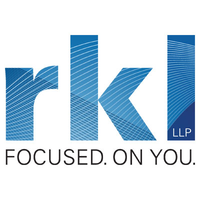CARES Act Analysis from RKL: Business Income Tax Implications and Planning Opportunities

 The largest federal stimulus bill in U.S. history – the Coronavirus Aid, Relief and Economic Security (CARES) Act – was signed into law on March 27, triggering $2.2 trillion in spending and relief measures for businesses and families grappling with the impact of coronavirus on their livelihoods and bottom lines. In its latest installment of CARES Act analysis, professional services firm RKL LLP looks at some of the key provisions impacting business taxpayers and highlights tax planning strategies to help navigate these uncertain times.
The largest federal stimulus bill in U.S. history – the Coronavirus Aid, Relief and Economic Security (CARES) Act – was signed into law on March 27, triggering $2.2 trillion in spending and relief measures for businesses and families grappling with the impact of coronavirus on their livelihoods and bottom lines. In its latest installment of CARES Act analysis, professional services firm RKL LLP looks at some of the key provisions impacting business taxpayers and highlights tax planning strategies to help navigate these uncertain times.
Increased Limitation on Business Interest Expense
The previously enacted Tax Cuts and Jobs Act (TCJA) limited the deduction for business interest expense to 30 percent of the taxpayer’s adjusted taxable income (ATI) for the tax year. The CARES Act increases the ATI limitation from 30 to 50 percent for taxable years beginning in 2019 and 2020 for C corporations and S corporations. The 50 percent limitation is only applicable to 2020 for partnerships. In addition, for any taxable year beginning in 2020, an election may be made to use 2019 ATI in lieu of 2020 ATI. Click here for tax implications and planning opportunities.
Net Operating Losses (NOL) Carrybacks and Limitation Relaxation
Under the TCJA, the ability to carry back a net operating loss (NOL) arising in tax years beginning after Dec. 31, 2017 was eliminated. In addition, an NOL carryover can only be used to offset 80 percent of current taxable income. The CARES Act lifts the carryback and taxable income restrictions for NOLs generated in tax years beginning after Dec. 31, 2017 and before Jan. 1, 2021 (i.e. 2018, 2019 and 2020 losses) permitting a five-year carryback of NOLs arising in those tax years. Click here to view a breakdown of NOL rules based on the year they are generated.
Acceleration of Corporate AMT Credits
The TCJA repealed the corporate alternative minimum tax (AMT) for taxable years beginning after Dec. 31, 2017, and allowed taxpayers to claim incremental portions of refundable minimum tax credits (MTCs) over taxable years beginning in 2018 through 2021. The CARES Act accelerates monetization of the remaining MTCs and allows an additional 50 percent credit for 2018 (50 percent was previously allowed) or a 100 percent credit of the remaining balance for 2019. Click here for tax implications and planning opportunities.
Qualified Improvement Property (QIP) Technical Correction
An error in the drafting of the final TCJA legislation omitted qualified improvement property (QIP) from the list of assets that qualify for bonus depreciation, and required QIP to be depreciated over 39 years. Because only property with a depreciation recovery period of 20 years or less is eligible for 100 percent bonus depreciation, QIP was not eligible for bonus depreciation due to this error. The CARES Act adopts a technical correction to the TCJA and updates the recovery period of QIP to 15 years, which makes this property eligible for 100 percent bonus depreciation through Dec. 31, 2022. Click here for tax implications and planning opportunities.
To learn more about these and other business tax provisions of the CARES Act (like state and local tax complexity, income tax accounting, and employee payroll tax deferral), read the full post on RKL’s blog.
Visit RKL’s Coronavirus Resource Center to learn more about the CARES Act, read its latest guidance, and register for its weekly webinar series.
[lp-contribute]
Join Our Community
Never miss a Delaware County story!
"*" indicates required fields




![95000-1023_ACJ_BannerAd[1]](https://delco.today/wp-content/uploads/sites/3/2023/03/95000-1023_ACJ_BannerAd1.jpg)


























